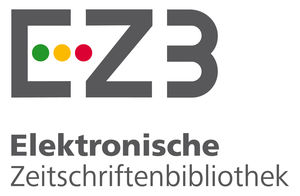Una
propuesta de modelo de referencia epistemológico para el estudio de los límites a través del diálogo a través de mecanismos de atención
DOI:
https://doi.org/10.23925/1983-3156.2024v26i3p175-200Palabras clave:
Límite de una función, Mecanismos atencionales, Modelo epistemológico de referenciaResumen
En este ensayo teórico se presentan propuestas de tareas y análisis praxeológicos en un Modelo de Referencia Epistemológico (MER) para la enseñanza del Cálculo Diferencial e Integral, dando un nuevo significado a la difusión de la noción de límite de una función por definición. El mencionado MER tiene como presupuesto epistemológico y metodológico la Teoría Antropológica de la Didáctica de Yves Chevallard y las ideas de procesamiento atencional de arriba hacia abajo y de abajo hacia arriba. La producción de datos para este estudio se produce mediante un análisis praxeológico basado en tareas extraídas de libros de texto y un análisis a priori del MER construido. Como resultado principal, se observó, a través del análisis inicial de las tareas que conformaron el MER, que el conocimiento tácito necesario para resolver las tareas puede ser evocado por su estructura, mientras que, en el procesamiento ascendente, el uso de imágenes Los recursos ayudan a centrar la atención en aspectos conceptuales importantes presentes en las tareas propuestas.
Citas
Boaler, J. (2013). The stereotypes that distort how Americans teach and learn math. The Atlantic, 12. https://www.theatlantic.com/education/archive/2013/11/the-stereotypes-that-distort-how-americans-teach-and-learn-math/281303/
Boyer, C. B. (1949). The history of the calculus and its conceptual development. Dover.
Chevallard, y. (1994). Les Processus de Transposition Didactique et leur Theorisation. In: Arasac, G.; Chevallard, Y.;Martinand, J.-L. & Tiberghien, A. (Ed.). La transposition didactique à l’épreuve. Grenoble: La Pensée sauvage, p. 135-180.
Chevallard, Y. & Joshua, M. (1982). Un exemple d’analyse de la transposition didactique. Recherches en Didactique des Mathématiques, 3(2), 157-239.
Cosenza, R., & Guerra, L. (2009). Neurociência e educação. Artmed.
Ponte, J. P., Carvalho, R., Mata-Pereira, J., & Quaresma, M. (2016). Investigação baseada em design para compreender e melhorar as práticas educativas. Quadrante, 25(2), 77- 98.
Fonseca, C., Gascón, J., & Lucas, K. (2014). Desarrollo de un modelo epistemológico de refe-rencia en torno a la modelización funcional. Revista Latinoamericana de Investigación en Matemática Educativa, 17(3). 289-318.
Fonseca, L. et al. (2017). Uma ecologia dos mecanismos atencionais fundados na neurociência cognitiva para o ensino de matemática no século XXI. Caminhos da Educação Matemática em Revista, 1, 19-30.
Gazzaniga, M. S., Ivry, R. B., & Mangun, G. R. (2006). Neurociência Cognitiva: a biologia da mente. Artmed.
Hembree, R. (1990). The nature, effects, and relief of mathematics anxiety. Journal for research in mathematics education, 21(1), 33-46.
Job, P., & Schneider, M. (2014). Empirical positivism, an epistemological obstacle in the learning of calculus. ZDM, 46, 635-646.
Karatas, I., Guven, B., & Cekmez, E. (2011). A Cross-Age Study of Students’ Understanding of Limit and Continuity Concepts. Bolema, 24(38), 245-264.
Pekrun, R., Frenzel, A. C., Goetz, T., & Perry, R. P. (2007). The control-value theory of achievement emotions: An integrative approach to emotions in education. In P. A. Schutz & R. Pekrun (Eds.), Emotion in education (pp. 13-36). Academic Press.
Posner, M. I., & Petersen, S. E. (1990). The attention system of the human brain. Annual review of neuroscience, 3(1), 25-42.
Relvas, M. P. (2023). Neurociência na prática pedagógica. Digitaliza Conteúdo.
Ruiz Munzón, N., Bosch, M., & Gascón, J. (2011). Un modelo epistemológico de referencia del álgebra como instrumento de modelización. Documents: Un panorama de la TAD, 10, 743-765.
Sarter, M., Givens, B., & Bruno, J. P. (2001). The cognitive neuroscience of sustained attention: where top-down meets bottom-up. Brain Research Reviews, 35, 146-160.
Schraw, G., Crippen, K. J., & Hartley, K. (2006). Promoting self-regulation in science education: Metacognition as part of a broader perspective on learning. Research in science education, 36(2), 111-139.
Sierpińska, A. (1994). The diachronic dimension in research on understanding in niathematics-usefulness and limitations of the concept of epistemological obstacle. Didactica Mathematicae, 16(1), 73-101.
Steele, C. M., & Aronson, J. (1995). Stereotype threat and the intellectual test performance of African Americans. Journal of personality and social psychology, 69(5), 797-811.
Swinyard, C., & Larsen, S. (2012). Coming to Understand the Formal Definition of Limit: insights gained from engaging students in reinvention. Journal for Research in Mathe-matics Education, 43(4), 465-493.
Zeki, S. (2002). Inner vision: An exploration of art and the brain. Oxford University Press.
Descargas
Publicado
Cómo citar
Número
Sección
Licencia

Esta obra está bajo una licencia internacional Creative Commons Atribución-NoComercial-SinDerivadas 4.0.
Autores que publicam nesta revista concordam com os seguintes termos:- Autores mantém os direitos autorais e concedem à revista o direito de primeira publicação, com o trabalho simultaneamente licenciado sob a Licença Creative Commons Attribution que permite o compartilhamento do trabalho com reconhecimento da autoria e publicação inicial nesta revista.
- Autores têm autorização para assumir contratos adicionais separadamente, para distribuição não-exclusiva da versão do trabalho publicada nesta revista (ex.: publicar em repositório institucional ou como capítulo de livro), com reconhecimento de autoria e publicação inicial nesta revista.
- Autores têm permissão e são estimulados a publicar e distribuir seu trabalho online (ex.: em repositórios institucionais ou na sua página pessoal) a qualquer ponto antes ou durante o processo editorial, já que isso pode gerar alterações produtivas, bem como aumentar o impacto e a citação do trabalho publicado (Veja O Efeito do Acesso Livre).













